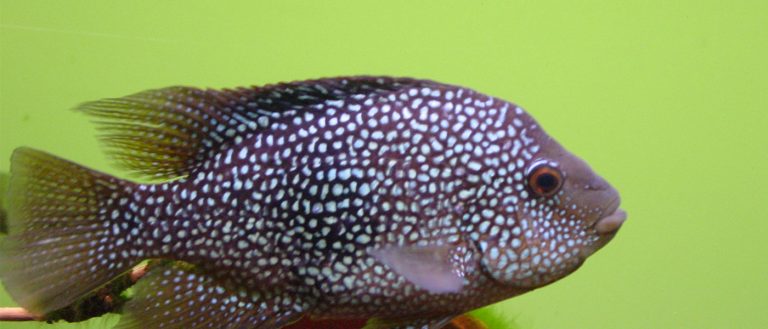Second ‘Cichlid’ fish species—native to Mexico—now threatening waters of southern United States, invading waterways in Louisiana
A Case Western Reserve University scientist has played the lead role in identifying an invasive species related to one already threatening other fish in the waters of the southern United States.
That discovery tells natural-resource managers and conservationists they may have a bigger problem on their hands than they thought.
“The introduction of non-native aquatic species is one of the greatest threats to natural ecosystems around the world,” said Case Western Reserve biologist Ronald Oldfield, who led a team of researchers that identified a second invasive cichlid fish species living in the New Orleans area. “Humans are permanently harming natural environments around the world through the introduction of non-native species.”
An invasive relative
The newly identified species is related to the Rio Grande Cichlid, sometimes called the Texas Cichlid, a fish native to the river it’s named after that forms the southern border of Texas. About the size of a human hand, its scales show off bright bluish-green spots over a gray-green background.
But that attractive coloring also makes the Rio Grande Cichlid (Herichthys cyanoguttatus) a popular pet. So the fish most likely escaped or was dumped into the water by their owners. It’s now found throughout Texas, Louisiana and Florida.
Scientists have documented that the Rio Grande Cichlid can dominate the waters by being aggressively territorial with other fish, especially bluegill.
They’re taking the threat seriously in Louisiana, in particular. The state has made it illegal to own the fish and requires anyone who catches one to kill it immediately. And private groups have set up fishing contests to encourage removing them from the water.
But scientists and natural-resource managers thought there was only one cichlid to worry about—until Oldfield, a senior instructor in Case Western Reserve’s Department of Biology, and his collaborators did some sleuthing.
“I believed there were two distinct fish species the moment I saw the Louisiana specimens,” Oldfield said. “It just took many years of gathering data to convince everyone else.”
The discovery
Over the course of three years, Oldfield raised offspring of fish caught in the wild in Louisiana and began marking differences between those and the Rio Grande Cichlid.
Oldfield and his collaborating researchers were aided by hundreds of fish images fishing enthusiasts and naturalists posted on iNaturalist and the Cichlid Room Companion, websites that allow the public to upload photographs of animals observed in the wild. The researchers were able to confirm two distinct species—mainly by color differences.
Oldfield and his collaborators published their discovery of the Lowland Cichlid (Herichthys carpintis) in the journal Miscellaneous Publications of the Museum of Zoology, University of Michigan.
Oldfield worked with Tom Lorenz, an associate professor at Georgia Southwestern State University, William I. Lutterschmidt of Sam Houston State, and Dean Hendrickson and Adam Cohen at the University of Texas at Austin.
Environmental implications
This newly discovered cichlid joins an increasing list of invasive species threatening natural populations of plants or animals.
It’s a list that also adds up financially: Containing the spread of invasive plants and animals nationally—from the Asian Carp threatening the Great Lakes to the giant rodent, nutria—costs an estimated hundreds of millions of dollars, according to various government agencies.
Invasive fish are especially troublesome. Agencies from the U.S. Fish & Wildlife service to the National Oceanic and Atmospheric Administration’s Fisheries Division consider aquatic invasive species to be a threat to biodiversity worldwide, second only to habitat loss.
“It is important to understand the identity of introduced species, and understanding the biology of not one, but two, species of Herichthys will be necessary to mitigate their spread,” Oldfield said. “They may very well differ in the way they affect native species. So far, there has been little research done on the effects that they might have, and that’s what’s extra scary.”
For more information, contact Mike Scott at mike.scott@case.edu.


